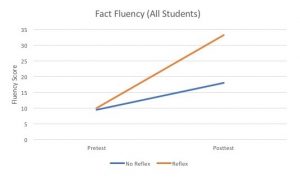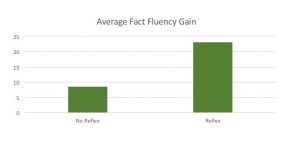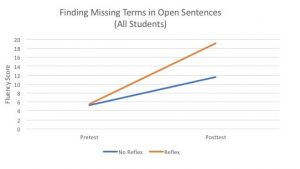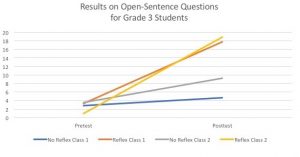
Ten classes of students at two Houston, TX area elementary schools participated in a math fact fluency study during the 2016-17 school year.
The students came from two schools: Rosehill Elementary in Tomball Independent School District and Bruce Elementary in Houston Independent School District. Out of the ten classes, there were two grade 2 classes, six grade 3 classes, and two grade 4 classes.
Half of the participating classes used Reflex, a math fact fluency system, and the other half used other fact fluency methods (flash cards, etc.). All the students were given a pretest in late September 2016, and a post-test in May 2017.
The schools
Rosehill Elementary in Tomball ISD is a rural elementary school with 482 students. It is a Title I school with 42% of its students on free or reduced lunch.
Bruce Elementary in Houston Independent School District is an urban elementary school with 615 students. It is a Title I school with 96% of its students on free or reduced lunch.
Skills measured
The study measured gains in two key math competencies: fluency with math facts and the ability to determine the missing value in an open sentence: for example 4 x ___ = 36 or ___ – 8 = 4. Recent research shows that both competencies are predictive of students’ scores on high-stakes achievement tests. [ Stevens, O. & Leigh, E. “Mathematics curriculum based measurement to predict state test performance: A comparison of measures and methods." 2012]
The ability to determine missing terms in open sentences has obvious tie-ins to algebra readiness. It is also a skill directly referenced in the math Common Core State Standards:
CCSS.MATH.CONTENT.3.OA.A.4: Determine the unknown whole number in a multiplication or division equation relating three whole numbers. For example, determine the unknown number that makes the equation true in each of the equations 8 × ? = 48, 5 = _ ÷ 3, 6 × 6 = ?
Math fact fluency

Students were scored based on speed and accuracy across multiple tests—their correct digits per minute minus incorrect digits per minute. The average student had a score of 10 on the pretest, given in September. By the end of the school year, students who did not use Reflex improved their average score to around 18. But students who had used Reflex averaged nearly 34 on the post-test.

Students who used Reflex enjoyed gains approximately three times as large as those in classrooms using traditional methods.
Finding missing terms in open sentences
 Reflex introduces math facts using fact families, teaching students the relationship between multiplication and division (or subtraction and addition) with in-product coaching. This facilitates solving simple algebra questions like 20 ÷ ? = 4. Students using Reflex showed twice as much improvement on missing value problems over the course of the school year compared to non-Reflex users. (Students were scored using the same rules as for fact fluency—correct digits per minute minus incorrect digits per minute across multiple tests.)
Reflex introduces math facts using fact families, teaching students the relationship between multiplication and division (or subtraction and addition) with in-product coaching. This facilitates solving simple algebra questions like 20 ÷ ? = 4. Students using Reflex showed twice as much improvement on missing value problems over the course of the school year compared to non-Reflex users. (Students were scored using the same rules as for fact fluency—correct digits per minute minus incorrect digits per minute across multiple tests.)
A closer look at four grade 3 classrooms

In one of the schools, the classes were spread across multiple grades. But in the other school, all the classes in the study were in grade 3 and similar demographically (100% minority and overwhelmingly economically disadvantaged), creating an especially clear opportunity to examine the effects of Reflex.
Students in the Reflex classrooms had similar pretest scores to those in the classrooms using traditional methods, but the classes using Reflex were significantly ahead by the end of the year.
Teacher perspectives
Teachers observed positive changes in their students who used Reflex. A 2nd-grade grade teacher at Rosehill Elementary School said, “I noticed my students growing in their abilities, which led to an increased confidence.” And a 3rd-grade teacher at Bruce Elementary School said, “I am very pleased with Reflex. It has worked wonders for my students!”